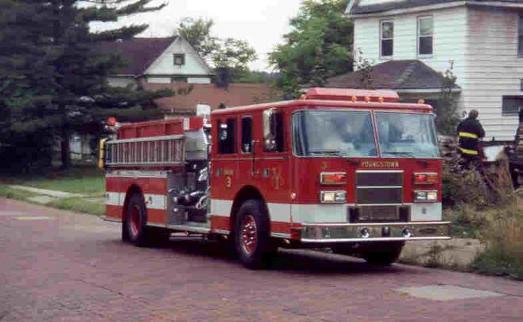
![]()
Youngstown Fire Department Overview
![]()
Active Stations And Apparatus Overview
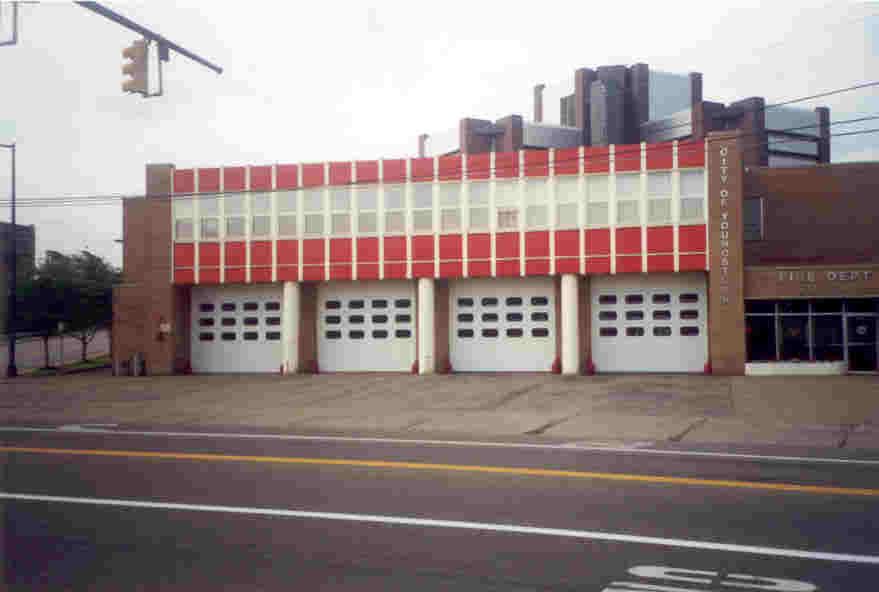
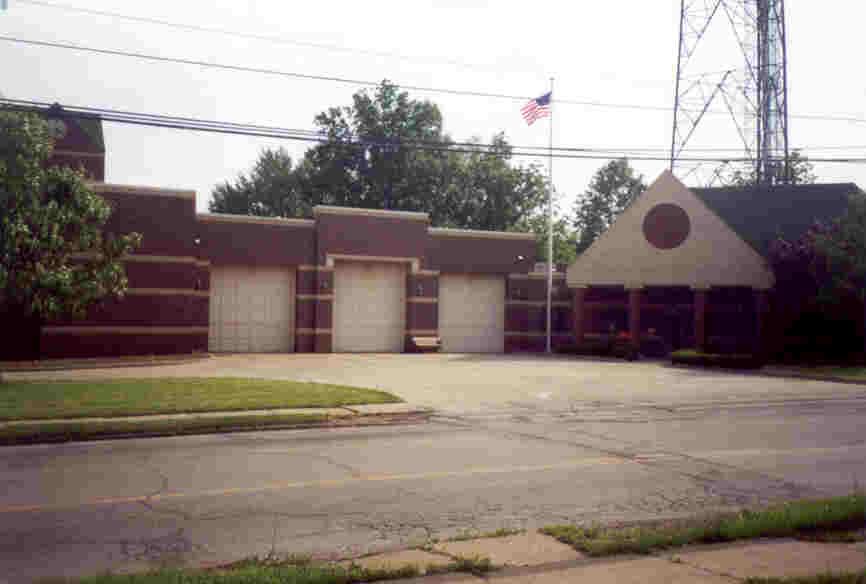
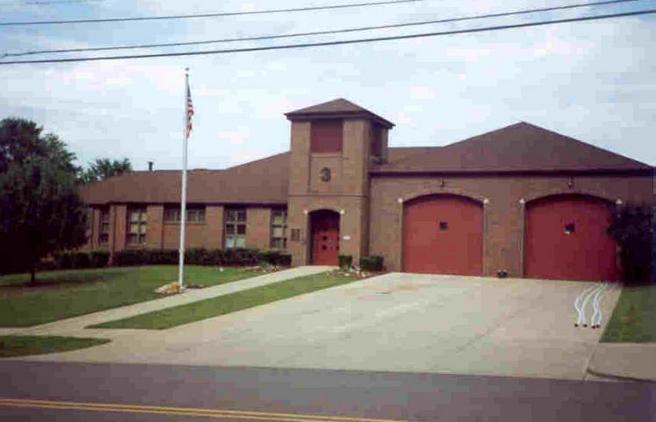
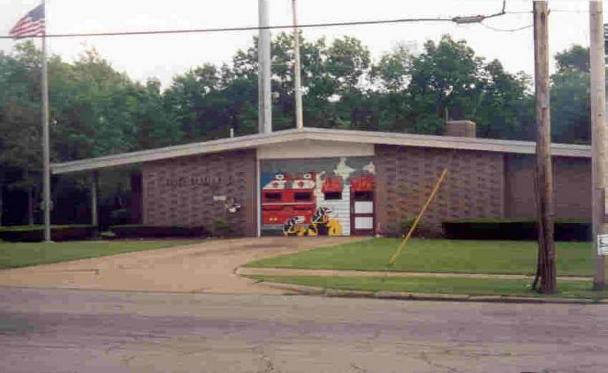
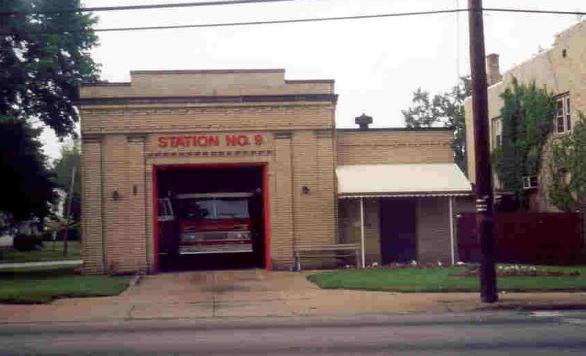
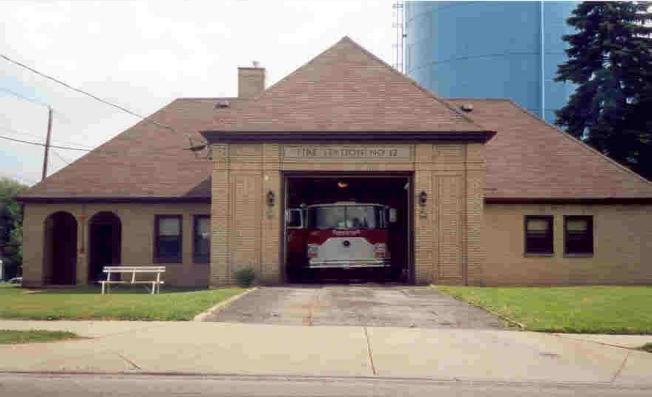
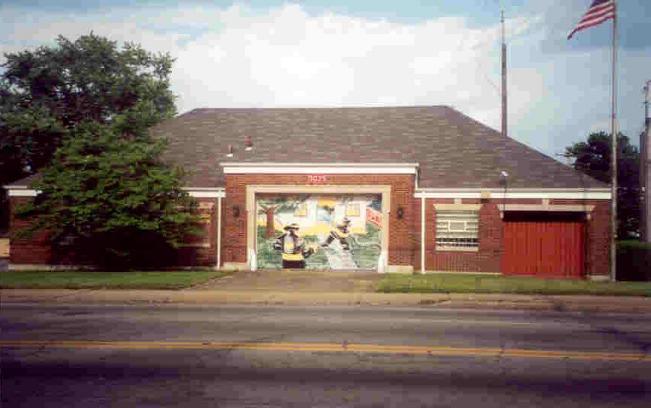
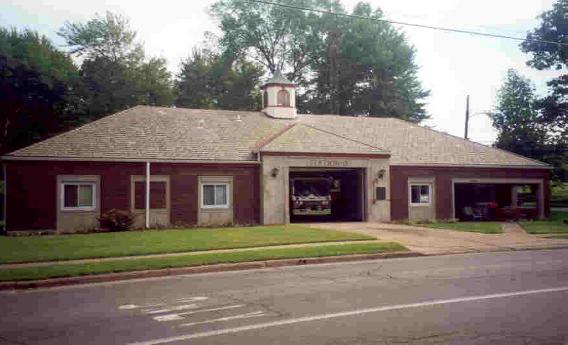
![]()
![]()
YFD Bulletin Board (external)
YFD Live Dispatch (external)
Newsletter (external)

YFD History: Page 2
|
____________________
1914: YFD at a Glance
1 Chief
1 First Asst. Chief
1 Second Asst. Chief
1 Chief Operator &
Clerk of Dept.
3 Operators
1 Superintendent of
Machinery
10 Captains
10 Lts.
10 Engineers
8 Asst. Engineers
45 Firemen
91 Total Members
No Horses
9 Stations
11 Pieces of Motorized
Apparatus
5 LODD - 4 Paid, 1
Volunteer
Joseph Wallace ~ Chief
__________________________________
|
Now that Youngstown was fully-motorized, its next step was to add stations to outlying areas and the heavier industrial areas, increasing the fire protection of the city. On June 10, 1914, fire station No.11, also called the Lansingville Station, on Poland Ave. at Jones on the lower South Side opened. When it opened, no new apparatus was available to operate from it, so the station was temporarily assigned a truck from downtown Station No. 1. Later it would be replaced with a new 1914 Nott hose wagon. Eight years after that, in 1922, a new Station No. 3 would be built to replace the current station at the corner of Belmont and Emerson Place on the city's North Side. A year later, another new station would open with No. 9 beginning operations on October 19, 1923 at Midlothian and Sheridan. This station had been completed in 1921 but the city lacked the funds to open it. Because of its location in the Brownlee Woods section of Youngstown, this station would also known as the Brownlee Woods or Pine Hollow Fire Station.
But, while preparations were made to open these new stations, the department would suffer 2 more line of duty deaths, one on April 30, 1919, when Michael J. Coughlin was killed (LODD) and another less than one month later, when on August 28, John Raymond Webb was killed (LODD). Both were killed in separate accidents involving a fire truck/streetcar collision.
The fire department would continue to expand and meet the demand of a booming steel town throughout the 1920's. New apparatus would always be the focus of this time, but it would not go without tragedy. On January 25, 1928, the alarm rang for a fire at Lee Tire Service and spread to go to Tamarkin Grocery. Capt. Walsh (LODD) was operating a hose line with two other firefighters when a wall collapsed. Walsh died of his injuries, while the other two FF's survived with only bruises.
The 1930's would see great change within the department. Several chiefs would be in command, several new stations would be opened and as always, new apparatus would keep Youngstown one of the most modern departments in the country. On January 13, 1931, the No. 12 Station, also called the Scienceville Station, at McGuffey and Colbey would open on the East Side. Two months later, Engine 12 would be one of several fire companies called to the Lincoln Theatre on Himrod Ave. A blast and fire inside would injure twenty theatre goers. Officials blamed the fire on an arson mob, which was responsible for sixty percent of Youngstown's fire loss the previous year.
The year 1932 saw the closing of the No. 1 station downtown, meaning that for the first time in the departments fifty-four years, there was no fire truck stationed downtown and there wouldn't be until 1954. Station 1, also called Central Station was closed and condemned that year with all of its apparatus being moved to out-lying stations. Two years later, on January 14, another station would close, but not for long, as the closing Station No. 3 would be temporary; just enough to pick up the station and move it a few blocks from its current location at Thomas and Foster to Belmont Ave. and Emerson. It was done as part of a WPA project.
 On March 5, 1936, the metal industry of Youngstown would be challenged by flame,
a pretty common thing in the area's steel mills. This time fire would strike the
Cold Metal Process plant on Mahoning Ave., destroying a completed mill and
three under construction. Damage was estimated at $500,000. That same year,
Herman Seinfurth (right) would be promoted from Asst. Chief to Chief. Under his
administration, the Youngstown Firefighters' Death Benefit Fund would be
established. This would give aid to the family members of any Youngstown
firefighter killed in the line of duty. At the time, there had been eight line
of duty deaths in the paid department.
On March 5, 1936, the metal industry of Youngstown would be challenged by flame,
a pretty common thing in the area's steel mills. This time fire would strike the
Cold Metal Process plant on Mahoning Ave., destroying a completed mill and
three under construction. Damage was estimated at $500,000. That same year,
Herman Seinfurth (right) would be promoted from Asst. Chief to Chief. Under his
administration, the Youngstown Firefighters' Death Benefit Fund would be
established. This would give aid to the family members of any Youngstown
firefighter killed in the line of duty. At the time, there had been eight line
of duty deaths in the paid department.
Like any fire department, Youngstown sees it share of false alarms, sometimes several a day. Sept. 1, 1939 was no exception. That day, firefighters rushed to the corner of Fairgreen Ave. and Covington St. only to find a man mistakenly trying to mail a letter in the Gamewell alarm box.
On November 25, 1940, Youngstown would lose another of its Bravest. This time Captain Thomas S. Lyster was found dead on the bathroom floor of Station 6(a) of an apparent heart attack. (LODD) A year after Capt. Lyster's death, Station 13 would open at Glenwood and Sherwood. This station would be known as the Fosterville station due to its location in the Fosterville section of the city.
Before the 1940's had ended, two more Youngstown firefighters would be killed in the line of duty. At approx. 7:30a.m. on Christmas morning, 1945, a false alarm was recorded from a pull box on the corner of Parmelee and Foster St. The closest truck was Squad 1 from Station 4 on Falls Ave, so it got the call. As it rounded the corner on Oak Hill, the squad truck hit a patch of ice, sending it crashing off of two phone poles and sending all of the hose off the back of the truck. The force of the hose coming off the back sent the two firefighters riding the tail step to be knocked off. Harold Lewis and William E. Jackson were those firefighters, and both succumbed to their injuries, FF Lewis (LODD) that day, and FF Jackson (LODD) the day after.
The year 1949 would mean the replacement of two of Youngstown's fire stations. Station No. 2 at Oak and Fruit streets would close in May so that a new station could be built on the same location. That station is still standing, although no longer in use. In September, Station No. 5 at Oakland and Superior in the Brier Hill section of the city would close so that a new station could be built on the same spot. Like Station 2(b), this building is still standing, but not operational. These two buildings are mirror images of each other.
The 1950's would bring three new fire stations to Youngstown's roster, as well as several large fires. On January 1, 1952, the No. 14 station would opened on South Ave. and Boston on the South Side. On February 1, 1955, Station No. 15 went into service and officially opened 15 days later at the corner of McCollum and Schenley. Finally, on March 1, 1956, a new Station 1 would open downtown. This was the first time downtown had a station since 1932 when Central Station closed. (see separate article below) . This time was not without it's share of accidents within the department. Thankfully, the only person hurt was the "Man on the Monument". On May 31, 1951, firefighter's were decorating for the annual Memorial Day parade on Central Square downtown when they bumped Youngstown's Civil War monument, commonly called the "Man on the Monument". The 70 year-old statue fell 47-feet to the ground, severing its head.
On September 3, 1954, Youngstown would see one of its most dramatic fire, as our beautiful St. Columba Cathedral burned to the ground. The night sky was filled with rain, thunder, and lightening. One of those lightening bolts found its mark, which happened to be the bell tower of the 50-year old gothic style cathedral. The fire smoldered unnoticed for hours and by the time it was, it was too late. The general alarm brought the entire department, but nothing could be done to save it. The loss was valued at $1,250,000.

As the 1960's came rolling in, many things within the department would begin to change. As was common in all decades of the department's history, new stations would be built and old ones replaced. Along with that would come spectacular fires and unfortunately, more deaths within the department ranks. Between 1960 and 1984, Youngstown would suffer seven line of duty deaths, something most departments of Youngstown's size don't see in their entire history. The first of these deaths would happen on February 4, 1960, when Charles E. Prosser was killed. (LODD) Capt. Prosser was commanding a group of firefighters in a controlled burn of a house on the city's lower South Side when he had a sudden heart attack. He was pronounced dead at South Side Hospital shortly after. He would be Youngstown's thirteenth line of duty death.
As time wore on and the East Side saw some expansion, the need for another station to replace Station No. 6 at Wilson and Jackson became apparent. As a result, on November 28, 1960, a new Station No. 6 was opened at Oak and Shehy. The units from the old No. 6 would relocate there and that station would close that day. Several years later, on February 3, 1963, Engine 6 would be part of the general alarm fire at the Youngstown Club on the top floor of the Union National Bank Building. Intruders set to rob the club set the fire, which caused $702,000 in damages. A major hindrance to firefighting operations was the cold weather. According to several firefighters who fought this fire, everything you could imagine was freezing, from hoses to ladders.
Youngstown's string of line of duty deaths would continue with two separated by a year and half. Capt. William Lightbody (LODD) died of a heart attack on August 6, 1964 and Engineer Fred J. Valenzisi (LODD) died of the same cause on January 17, 1966. Both were on the scene of a fire at the time that they were stricken.
The next year, Youngstown would go down in history as having the first public safety forces in the country ever to go on strike. On September 6, 1967, members of both the YFD and police department went on strike. Because of this they received national attention, making all of the national news broadcasts. On Sept. 11, the strike ended. During this five-day time period, only approx. 7 recently-hired firefighters manned the departments trucks. They had almost no time at home, working those days without relief.
_______________________________
YFD and YPD GO ON STRIKE!!!!
Photo and some information courtesy the Youngstown Vindicator
On September 6, 1967, members of the Youngstown Fire and Police Departments become the first public safety workers ever to go on strike in the United States. The strike was resolved on Sept. 11.
The photo above, taken in Sept. 1976 shows the third strike by policemen and firemen in Youngstown and again they received national attention. This strike ended four days and a rash of fires later, with the strikers receiving a six percent raise negotiated with the city's republican mayor and democratic council.
By the early 1970's, the days of the flower children and the era of love were leaving and disco was all the rage, but things in the Youngstown Fire Department went on like business as usual. On November 21, 1971, a fire would strike the old New York Central terminal at the corner of Himrod and Penn Aves. Inside that building was a two-month supply of Vindicator newsprint that the Vindicator was storing their. Today the Vindicator stores their paper right at the publishing plant downtown.
By 1972, it became apparent that steel in this country was no longer what it used to be, and that meant that when the mills closed, the stations providing their protection would close as well. On March 29, 1972, the No. 4 station at Falls and Oak Hill and the No. 11 station at Poland Ave. and Jones closed. Now, one cannot say that was the only reason. Both stations were quite old and the newer stations in the newer stations nearby were able to cover their first-due area. Station 11 is still standing, serving as an auto repair shop. Unfortunately, the great No. 4 station was not as lucky. On March 12, 1975, it was demolished despite many attempts to declare it a historic building.
One of the stations set to help cover No. 11's area was Station No. 14. That was where FF John Barry Lloyd (LODD) had been stationed for 15 of his 28 years on the department and it was there that he suffered a fatal heart attack. After three days in the hospital, he died February 17, 1976, becoming Youngstown's sixteenth line of duty death. A year and half later, Youngstown lost another brother, as Joseph "Conzy" Lucci (LODD) would fall to a heart attack on October 3, 1977. A year and half after Capt. Lucci, on January 8, 1979, Asst. Chief Michael L. Dolak (LODD) would too, fall to a heart attack. Of the seven line of duty deaths since 1954, all of them have been heart attacks.
These deaths saw the need for a permanent memorial to be erected so that these brave men would always be remembered. Therefore, on October 8, 1979, the Firefighters Memorial was dedicated across the street from the No. 1 station. The design, created by Fire Inspector Bill Brown, features eight pillars supporting four arches that rise up to four Maltese crosses, each pointing a side of the city. Next to that stands a fire hydrant, one of the best known symbols of the firefighter. For a photo of this monument, please visit the dedication page.
As the 1980's came in, steel was going out. With that, meant less money to operate stations and the decreased population saw the call volume gradually decrease. That meant that three stations would no longer be needed in the city. So, as a result, on September 8, 1980, the No. 2 station at Oak and Fruit, the No. 3 station at Belmont and Emerson Place, and the No. 14 station at South Ave and Boston closed.
On March 5, 1984, Youngstown would see one of it's largest fires in the past several decades as a two-alarm fire would break out at the Mansion Restaurant on Market St. Soon after returning from that fire, Engineer John W. Walsh felt ill and complained of chest pains, but went home at the end of his shift the next morning. At home he became ill again and was taken to St. Elisabeth's Hospital where he passed away from a heart attack. (LODD) He was Youngstown's nineteenth and final line of duty death to date.
The year 1984 would mean the end to one of Youngstown's historic landmarks. On April 26, 1984, the old trolley park- turned-amusement park called Idora would catch fire as the result of a careless welder. The two-alarm fire would cause over $2.5 million in damages and destroy the Lost River Ride, part of the recently refurbished Wildcat roller coaster, as well as 11 concessions and the park office. That fire would keep the season a slow and dismal one, so on September 2, the park closed for good. Two more 2-alarm fires would strike the park in the next 17 years, one in 196 would destroy more of the closed attractions and one just this past March 5, 2001, would completely destroy the famous Idora Park Ballroom, which some had hoped to restore. But, it was not meant to be...
In 1986, two major events happened within the department. On May 12, stained glass windows by FF Art DeCarlo were added to the cupola of Station No. 15 on the West Side and on July 17, the Youngstown Fire Belles Ladies Auxiliary was organized as a support group for the department, hosting events and supporting the needs and mission of the department.
|
____________________
1991: YFD at a Glance
1 Fire Chief, Hector Colon
6 Asst and Batt. Chiefs
166 Firefighters
6 Medics
7 Inspectors and
Investigators
2 shop workers/mechanics
9 Stations
10 Engines
2 Ladders
2 Medic Units
13 Misc. Vehicles
19 LODD - 18 Paid, 1
Volunteer
__________________________
|
As time went on, more cutbacks were needed within the department as the city's budget kept shrinking. As a result of these new cutbacks, around 1990-91, the No. 5 fire station at Oakland and Superior and No. 8 station at Market and Glenaven were closed, Engine Company 1 disbanded, and the medic/ambulance units shut down. This was all just in time for the 100th birthday of the paid department which was celebrated May 16, 1991. But, with the department's birthday came redemption, as two new stations were opened in 1992. On January 29, a new No. 2 station opened on Indianola Ave on the city's South Side and on May 22, a new Station No. 3 would open to service the West Side on Belle Vista Ave. near Burbank. That same day, Station No. 10, just down the street, would close and Station 3 would get No. 10's trucks.
Today, the Youngstown Fire Department is again at the forefront of firefighting. They operate 7 engines, 2 ladders, a rescue squad, and 2 battalions out of 9 stations, as well as a hazmat team, rope rescue/confined spaces team, and have top notch arson investigation and inspection bureaus. The department's history as well as its living legacy today should make any Youngstown resident proud that when the alarm goes off, the Youngstown Fire Department will be the one to respond.
|
________________
2001: YFD at a Glance
148 Firefighters, including
10 females
9 Stations
10 Pieces of motorized
apparatus
7 Engine
2 Ladders
1 Heavy Rescue
19 LODD - 18 Paid, 1
Volunteer
John O'Neill, Jr. ~ Chief
______________________________
|
Sources for this history include articles from the Youngstown Vindicator, youngstownfire.com by Greg Ricker, These Hundred Years published by the Youngstown Vindicator Publishing Company, the 1910 and 1914 Histories of the Youngstown Fire Department, the 1991 IAFF Local 312, Youngstown FD official publication (history written and compiled by Lt. Bob Sharp, ret.) and interviews of Youngstown firefighters by Michael P. Kurilla throughout the late 1970's.
